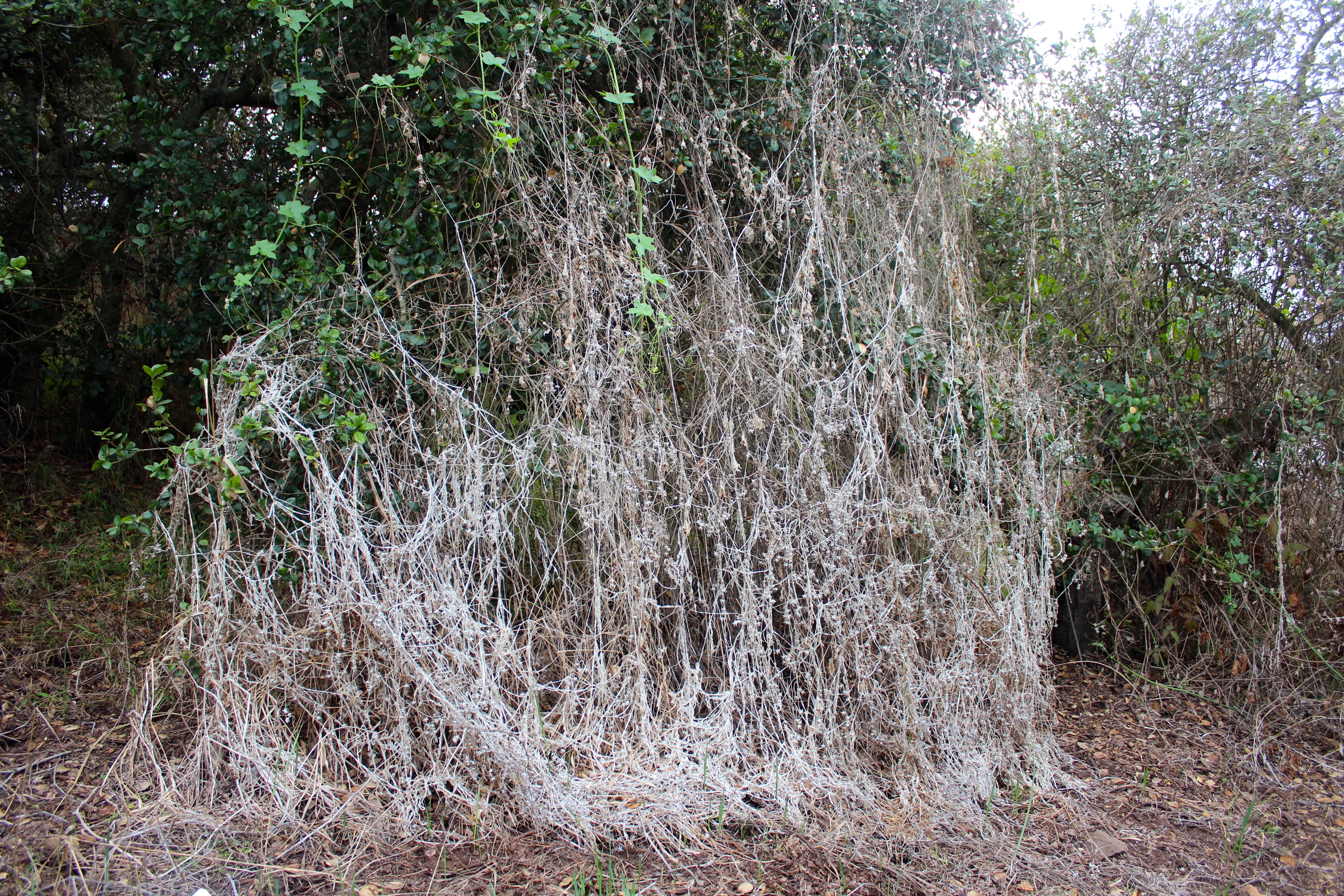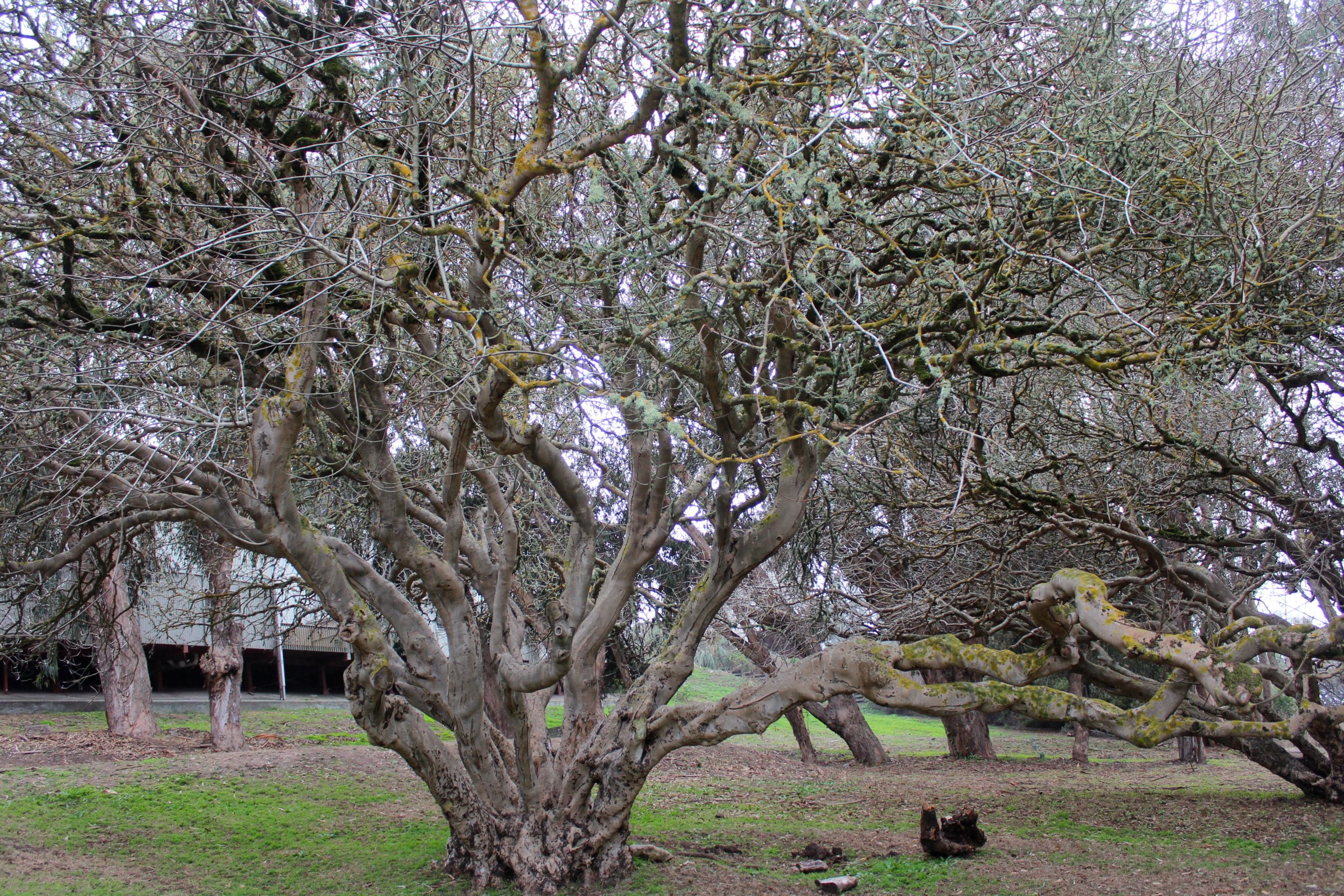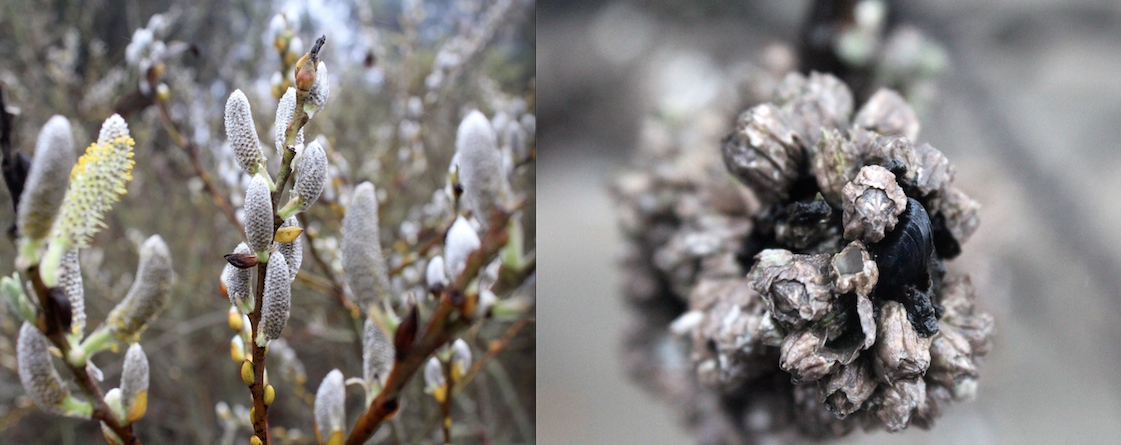or Mike Wood, 1995 was the year of discovery. That was the year the U.S. Navy found him, a well-traveled botanist with a penchant for history, and commissioned him to undertake a rare plant survey of Yerba Buena Island, as they prepared to withdraw from the base.
Like thousands of other Bay Area residents, Wood had driven through the five-lane Yerba Buena tunnel countless times. He’d never thought much of the scenery, since from the Bay Bridge, as he approached that gaping mouth drilled through the island’s core, all he could see was a forest of French broom and eucalyptus.
But he accepted the Navy’s proposal, thinking it would at the very least, be neat for the views. And over the next two years, as he explored each corner of the island, treading lightly through dense vegetation and negotiating steep slopes along the sandstone cliffs, he found himself — botanically — very, very surprised.
And so this short-term project turned into a two-decade obsession. Wood surveyed, and described, and read, and over time came to understand Yerba Buena Island and its botanical history in a way few others have. He admits that for most botanists, the island is nothing special. But this chunk of Franciscan rock, isolated by water, fenced off from the outside world and surrounded by a sprawling metropolis, became his El Dorado.
On Yerba Buena Island’s west side, where the Bay Bridge reaches out to the San Francisco skyline, Wood shimmies down a dirt path to his favorite spot on the island. “When I first hacked my way through here I was astounded,” he says. “You drive by it and you think you’re looking at shrubs.” With low slung branches, knotted and gnarled, edged with spiny leaves and crusted in lichen, they are everything you expect an aged, coast live oak to look like. But battered by constant wind and rooted in thin soil over rocky substrate, the oaks stand no taller than six feet.
“Isn’t this the most beautiful little habitat?” Wood asks.

He leads the way through the pygmy oak grove, tramping across invasive veldt grass, to a stand of fiesta flower — an herb stretched across a tree. In the spring, the fiesta flower blooms with one inch wide violet flowers. But it’s winter now, so the fiesta flower is now dormant and stands in a sticky, white web with the curled tentacles of wild cucumber creeping above it. The fiesta flower had been extirpated from San Francisco so Wood was excited to find it on the island and has begun collecting seeds for reintroduction.
“See, look at that,” he says as we clamber out of the grove, pointing to one last fiesta flower webbed across an oak. “It’s very happy out here.”
On a scorching day in 1886, thousands of San Franciscans trekked up the steep slopes of Yerba Buena Island, seeds and seedlings in tow, to celebrate California’s first Arbor Day. There is no record of what species were planted on the island that day or, of how many survived the harsh ridgetop weather, but it is this history of isolation from the mainland and military occupation for over a century, that has shaped the botany of Yerba Buena Island today.
Around 40 percent of the plants found on the island now are native to California, of which 36 percent are presumed to be indigenous to San Francisco county. Only one of these, dune gilia — an annual herb endemic to California and largely found on the southeast side of the island — is formally classified as rare. The other 58 percent of plants — such as french broom, eucalyptus , ice plant and a pretty flowering shrub called the Canary Island Marguerite — are non-native and, much to Wood’s dismay, ubiquitous. But tucked in between the island’s invasive species, there are gems, reasons to come back, like the pygmy oak grove and the surprising stands of fiesta flower.
ack in the ‘90s, before the Navy had ceased operation on Yerba Buena Island and before he had been contracted to explore l the island, Wood joined the Yerba Buena (San Francisco) Chapter of the California Native Plant Society as the co-chairman of its Rare Plant Program Committee. At the time, the chapter was light on botanical expertise, Wood says, but among its many dedicated members there was a wealth of local knowledge. As chapter members walked San Francisco’s natural spaces they would note plant species, list genera, and jot down locations on the backs of receipts and paper bags and pieces of loose leaf that eventually found their way to Wood. “There were some really wonderfully eccentric characters and they knew so much stuff that I thought, ‘Someone has got to write this down,’” he says.
Wood, a natural listmaker, decided to embark on a decidedly unscientific project. He compiled the data collected from fellow CNPS members with his own botanical surveys to create an annotated, easy-to-use checklist of every vascular plant in San Francisco County’s natural spaces. The master list is a monster spreadsheet divided into categories — major group, family, species — that was completed early last year. “I had a slow February,” Wood says.
He has since parceled the information into 67 individual lists, one of which is for Yerba Buena Island, that he hopes will be an accessible guide for people hiking in the city.
As we walk along the edge of Treasure Island Road, the gateway to Yerba Buena’s manmade and more well-known neighbor, the Bay views that first persuaded Wood to take a botanically dull job have disappeared beneath the fog. “It’s like finding a white rabbit in a snowstorm,” he says.
Wood leads the way to a stand of California buckeyes that shade a grassy area outside a former Navy apartment block. We stop and for a moment, stand in silence. “You won’t find a bigger one,” Wood says, nodding at an old, almost regal buckeye with eight thick stems extending from its center and twisted, serpentine branches that form a Medusa-like canopy. The buckeyes — one of the island’s six remnant native habitats — are a glimpse into the past, a statement of what was, and perhaps a suggestion of what should be.

“You wanna go see a California mangrove?” Wood asks. “It’s the closest thing you’re ever going to see to a mangrove swamp here.”
On the island’s north-facing slope we walk through a grove of oaks and toyons, their undergrowth blanketed with ferns and ivy, and step onto the sandy shores of Clipper Cove. It is a sheltered patch of beach, tucked between two islands and even on this drizzling day, it is warm, almost cozy.
Wood leads the way to a thicket of arroyo willow that borders the island’s crumbling sandstone slopes. These willows are one of the island’s unique features: rooted above the tideline they grow horizontally, shooting branches toward the Bay and over the salty water. The highest branches are covered with velvety buds while the lowest are encrusted with small, white barnacles. “I was cracking up the first time I saw it,” Wood says. “It’s completely incongruous because they don’t tolerate salt water.” Perhaps not manmade but certainly human induced, this patch of “California mangrove” is most likely sustained by natural and artificial sources — rain dripping down the rock slopes and water seeping from old, leaky pipes.

At a break in the willows, we approach the sandstone cliffs and Wood points out a small patch of bluff lettuce growing just above the tide line. Bluff lettuce is a small succulent, a cross between a rose and a cabbage, with red tipped leaves. It is the kind of plant that would be easy to miss when you have an entire island to survey. But Wood, with his botanist’s eye and pioneer’s spirit, has climbed these trails, crawled these slopes, and scoured these shores to search, to find, to list, and to discover.
Visit Mike Wood’s website to view, download or print the checklists of vascular plants in San Francisco’s natural areas.
Please note: At this stage, individuals are discouraged from hiking around Yerba Buena Island alone. However, from time to time the Yerba Buena CNPS Chapter organize guided, group tours. Please visit their website to check for any upcoming dates.





